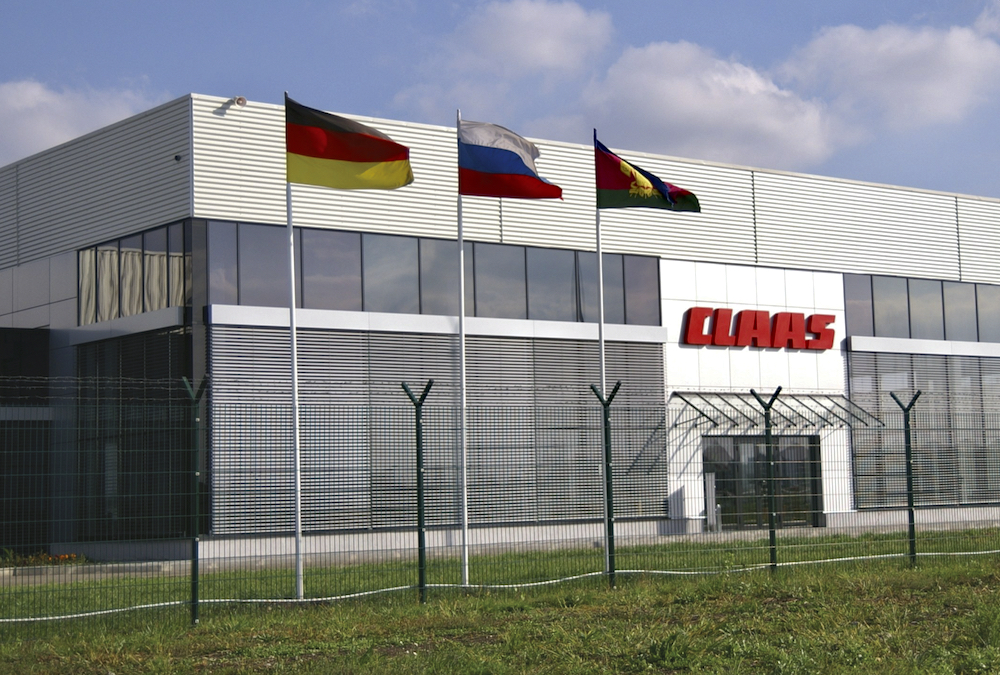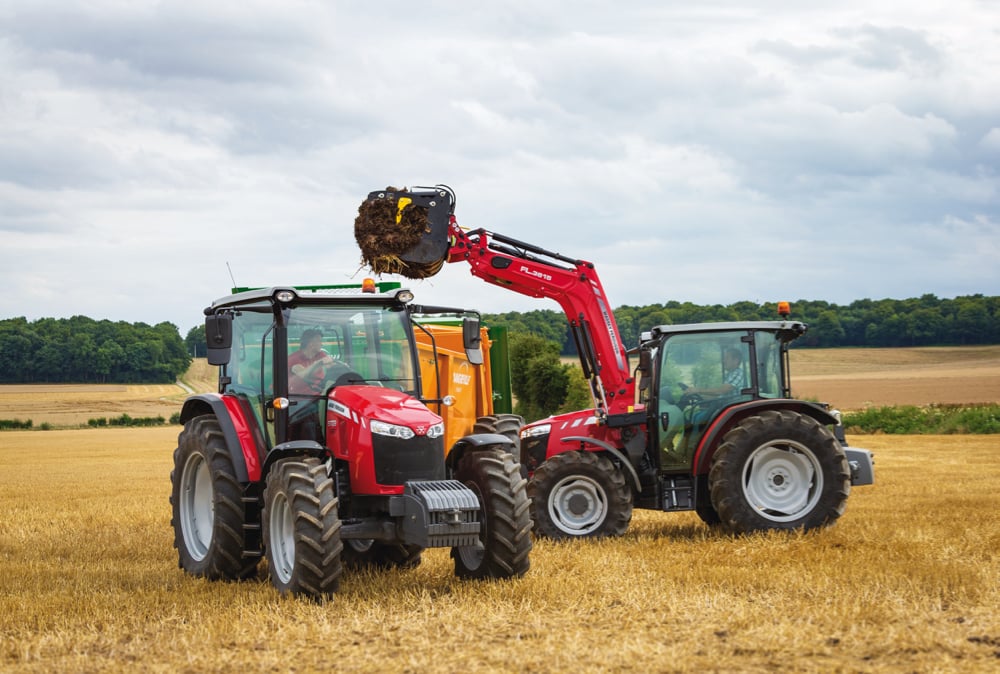During Agritechnica 2013 in Hannover, Germany, I was invited to an informal dinner with some representatives of DLG, the German Agricultural Society, which organizes the show. I ended up sitting next to DLG’s agricultural economist, so it was a perfect opportunity to discuss a variety of topics affecting farmers on both sides of the Atlantic.
At the time, our federal government was busy hyping the tentative free trade agreement it signed with the EU. When I asked that DLG economist if the potential deal was generating any discussion in German agricultural circles, his answer was to the point. “No,” he said. “I don’t think many people are even aware of it. People are more interested in the idea of a free trade deal with the United States.”
Read Also

Summer Series: Old machines,new technology
One of my first jobs was working as a mechanic’s helper at a farm equipment dealership in the late 1970s….
Meanwhile, the Trans-Atlantic Trade and Investment Partnership (TTIP) negotiations between the EU and U.S. are grabbing headlines in the ag equipment sector on both continents.
Although Canada does export a lot of farm equipment to Europe, the value of that trade is small compared to what the U.S. floats over. And when large trade numbers are involved, there are bigger opportunities. The TTIP negotiations have a stated aim of broadly harmonizing regulations affecting a variety of industries in order to stimulate trade. That could benefit Canadian ag equipment manufacturers as well. We share a broad range of standards with the U.S.
As part of the process, the European Commission asked CEMA (the European Agricultural Machinery Association) to come up with specific examples of where it would make sense to harmonize machinery standards.
“Several notable technical differences still exist,” CEMA says in its position paper on U.S. versus European standards. “While some of these are small in nature, the totality of differences results in numerous practical difficulties and challenges for manufacturers and represents significant, yet unnecessary and avoidable trade barriers and costs… CEMA believes that a good deal of these differences could be addressed and subsequently solved within the framework of a regulatory co-operation process under TTIP.”
A draft of our completed Canada-Europe free trade agreement indicates we’ve agreed to co-operate on regulations with the E.U. too. “… each Party shall, when appropriate, consider the regulatory measures or initiatives of the other Party on the same or related topics,” it reads. A technical summary on the Canadian Government website refers to a provision that “establishes procedures through which Canada and the EU can request that each other’s technical regulations be considered as equivalent,” at least in the auto sector, although it’s considered likely any significant harmonization of ag equipment regulations will need to come out of the TTIP.
The regulatory differences between Europe and North America involve a variety of standards that farmers might not think of when they climb into a tractor cab. For example, the designs of all those warning labels plastered on a machine’s tinwork vary depending on where the equipment is sold.
In Europe, ISO regulations require different symbols applied in different places than in the U.S. and Canada. In North America, ANSI rules also require descriptive words along with the symbols.
There can be regional wrinkles too. For instance, manufacturers must up-rate their standard 1.8-inch-wide seat belts to three inches if they want to sell machines in California.
But not all are minor differences. Some are substantial — potentially very substantial — such as harmonizing off-road engine emission regulations.
“The implementation of a particle number limit in the power range (25 to 750 horsepower) is now embedded in the proposed new EU regulation on NRMM exhaust emissions, the so-called Stage V,” reads the CEMA paper. “However, the U.S.A. has not yet integrated this requirement in their regulatory environment.”
Yet even those differences pale compared to even more challenging design variations between farm equipment bound for North American shores versus machinery that goes to work in the EU.
On a media tour of Fendt’s new state-of-the-art tractor factory in 2013, I was one of only three North American journalists to get a personal introduction to the brand’s new 500 Series tractors. We saw the first official tractor roll off the line and out the factory doors amid much fanfare. But there was one snag from our perspective: even though the large crowd of Europeans milling around could anticipate soon putting the tractor to work, the 500 Series is still not available in a design that meets North American engineering standards.
Even though Fendt’s PR people were eager for us to tell Canadian and U.S. readers they would one day be able to own a 500 Series tractor too, there was a reluctance to say exactly when that might happen. The major changes that had to be designed for a North American version included such things as a front PTO shaft that rotated in the opposite direction, not just a few simple adjustments.
But not everyone agrees the standards are different enough to warrant negotiating broad-based regulatory harmonization into the TTIP. Writing an editorial piece in the German-language engineering magazine der Eilbote, Johannes Molitor of Molitor AgroTech GmbH suggested continental regulations account for only minor differences in combines.
“With my 14-year design experience with combines, there isn’t half a per cent difference in construction between a combine for U.S.and Germany,” is the English translation. “All the rest are differences in the equipment customers want.”
But aside from a disagreement in the value of potentially harmonizing machinery standards through the TTIP, there seems to be one thing that many industry insiders do agree on. They’re worried by the lack of information on what’s up for negotiation.
Public pressure prompted the EU Commission to release some information about the process late last fall, but the criticisms remain.
“There is little transparency,” said Molitor. “…the responsible EU Commission, to November, only provided a 19-page document to the public. Secret negotiations and agreements are not compatible with our democracy in my view.”
The German-language headline of a press release from VDMA, the German Engineering Federation, echoed that sentiment. “The entire process must be more transparent” is the English equivalent.
Similar criticisms were also levelled at the Canadian negotiations. In 2013, before either side revealed the agreement’s details, the Canadian government was asked during question period in the House of Commons about what exactly is contained in the agreement.
Here’s how that exchange went, starting with a question from Marc Garneau, Liberal foreign affairs critic: “Mr. Speaker, the Conservative government has not provided any details on what the CETA (Canada-Europe Trade Agreement) deal means to Parliament and to Canadians during the past four years… I would like to ask the government what information it has shared with the provinces because obviously the provinces have to sign on. Would the Conservatives share that with the rest of Parliament, please?”
The response from Pierre Poilievre, minister of state, was dismissive: “Mr. Speaker, he wants details. Let me give him some details: 80,000 net new jobs; 500 million new consumers for Canadian businesses to reach; a cornucopia of new products to which Canadian consumers will now have access… It is the biggest trade agreement since NAFTA… ”
But the NAFTA agreement was handled much differently. The Conservative government, then under Brian Mulroney, didn’t just drop a completed agreement into the public domain, it was a very open process through negotiations, and an election was held based on the merits of it.
So the question on the minds of many industry players today — particularly those in Europe — seems to have evolved from what harmonization should we consider to this: Is it satisfactory for democratic governments to adopt a closed-door, “just trust us” approach to matters that have such a significant impact on the economic affairs of a nation?
















